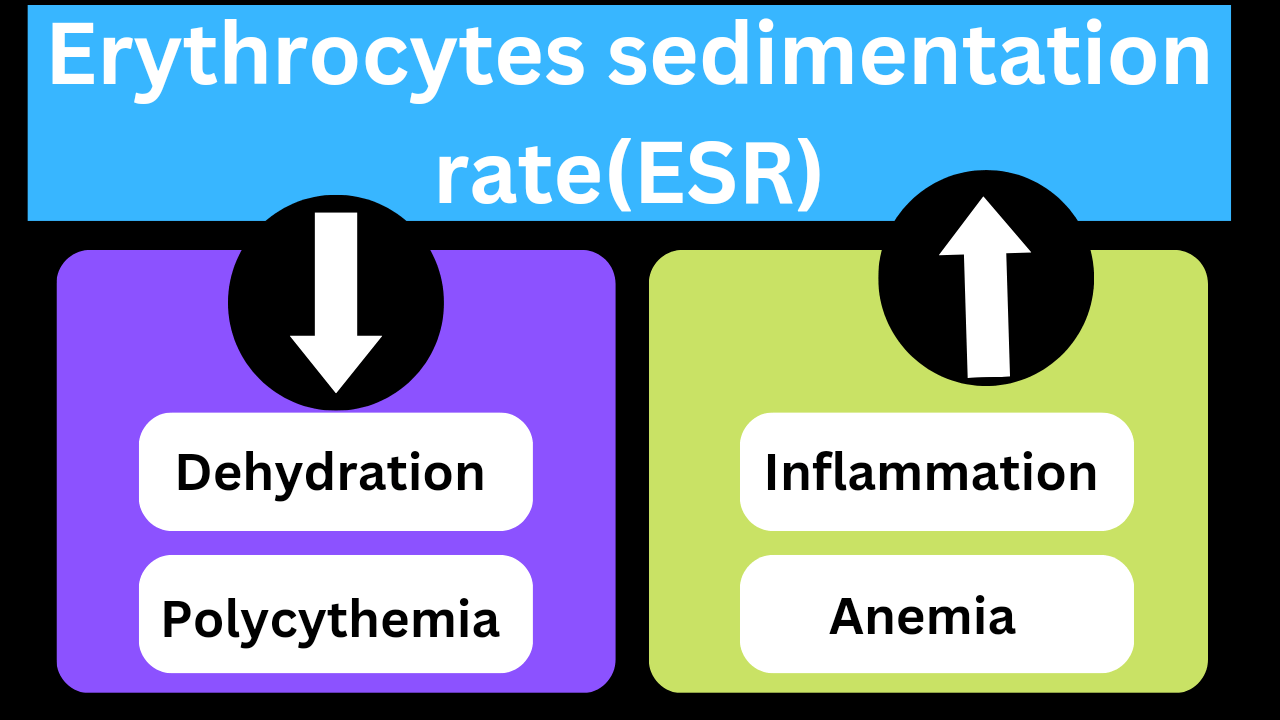ESR (erythrocyte sedimentation rate) is a blood test used to measure the rate at which red blood cells settle to the bottom of a test tube in one hour.
It is an indirect measurement of inflammation in the body, and can be used to help diagnose a variety of conditions including infections, autoimmune diseases, and some types of cancer.
When there is inflammation in the body, the red blood cells tend to clump together, making them heavier and causing them to settle faster.
What is the principle of erythrocytes sedimentation rate?
The principle behind the ESR test is that red blood cells tend to clump together in the presence of inflammation, making them heavier and causing them to settle faster.
The rate at which red blood cells settle to the bottom of a test tube is an indirect measurement of inflammation in the body. The higher the ESR, the higher the level of inflammation.
What is the procedure of erythrocytes sedimentation rate?
The procedure for performing an ESR (erythrocyte sedimentation rate) test is as follows:
- A blood sample is drawn from the patient’s arm into a vacuum tube.
- The blood sample is placed into a tall, narrow test tube.
- The test tube is then placed vertically in a special instrument called a Westergren apparatus.
- The Westergren apparatus is left undisturbed for one hour, during which time the red blood cells settle to the bottom of the test tube.
- After one hour, the distance that the red blood cells have settled is measured and recorded.
- The ESR is then calculated by dividing the distance that the red blood cells settled by the height of the test tube and multiplying the result by a conversion factor (usually 2).
What is the normal range of erythrocytes sedimentation rate?
The normal range for erythrocyte sedimentation rate (ESR) is typically considered to be 0-20 mm/hr in men and 0-30 mm/hr in women.
However, it is important to note that the normal range may vary depending on the laboratory and the specific method used to measure the ESR.
What are the causes of high erythrocytes sedimentation rate?
Following are the causes of high ESR (erythrocytes sedimentation rate) .
- Inflammation: ESR is often raised in response to inflammation, such as rheumatoid arthritis or infection.
- Autoimmune disorders: Autoimmune disorders such as lupus or vasculitis can result in raised ESR levels.
- Cancer: Certain cancers, such as multiple myeloma or lymphoma, can cause an increase in ESR.
- Anemia: ESR may be elevated in anemias, where there is a decrease in the number of red blood cells.
- Chronic disease: Chronic diseases like kidney disease or liver disease can also increase ESR.
ESR high means?
A high ESR result indicates that red blood cells are settling rapidly, which can be a sign of inflammation in the body.
Inflammation can be due to infections, autoimmune diseases, and certain cancers can lead to elevated ESR levels.
What are the causes of low erythrocytes sedimentation rate?
Following are the causes of low sed rate.
- Polycythemia vera: A condition where there is an overproduction of red blood cells.
- Dehydration: Not enough fluid in the body can lead to thickened blood, resulting in lower ESR.
- Pregnancy: ESR tends to be lower during pregnancy due to hormonal change.
- Elderly: ESR levels generally decrease with age.
- Hypothyroidism: A decreased activity of the thyroid gland can lower ESR levels.
ESR low means?
A low ESR.It meansresult indicates that red blood cells are not settling rapidly, which may be due to various conditions such as dehydration, anemia, or some autoimmune diseases.
Note: However, a low ESR value does not diagnose a specific condition and must be evaluated in conjunction with other clinical and laboratory findings.
Here is the video of erythrocytes sedimentation rate principle procedure.
The ESR test is a simple and inexpensive test that requires a small blood sample. It is usually performed as part of a routine health checkup or whenWestergren erythrocytes sedimentation rate principle procedure high and low cause s a doctor suspects the presence of inflammation or disease.

3 thoughts on “Westergren erythrocytes sedimentation rate blood test principle procedure high and low causes”